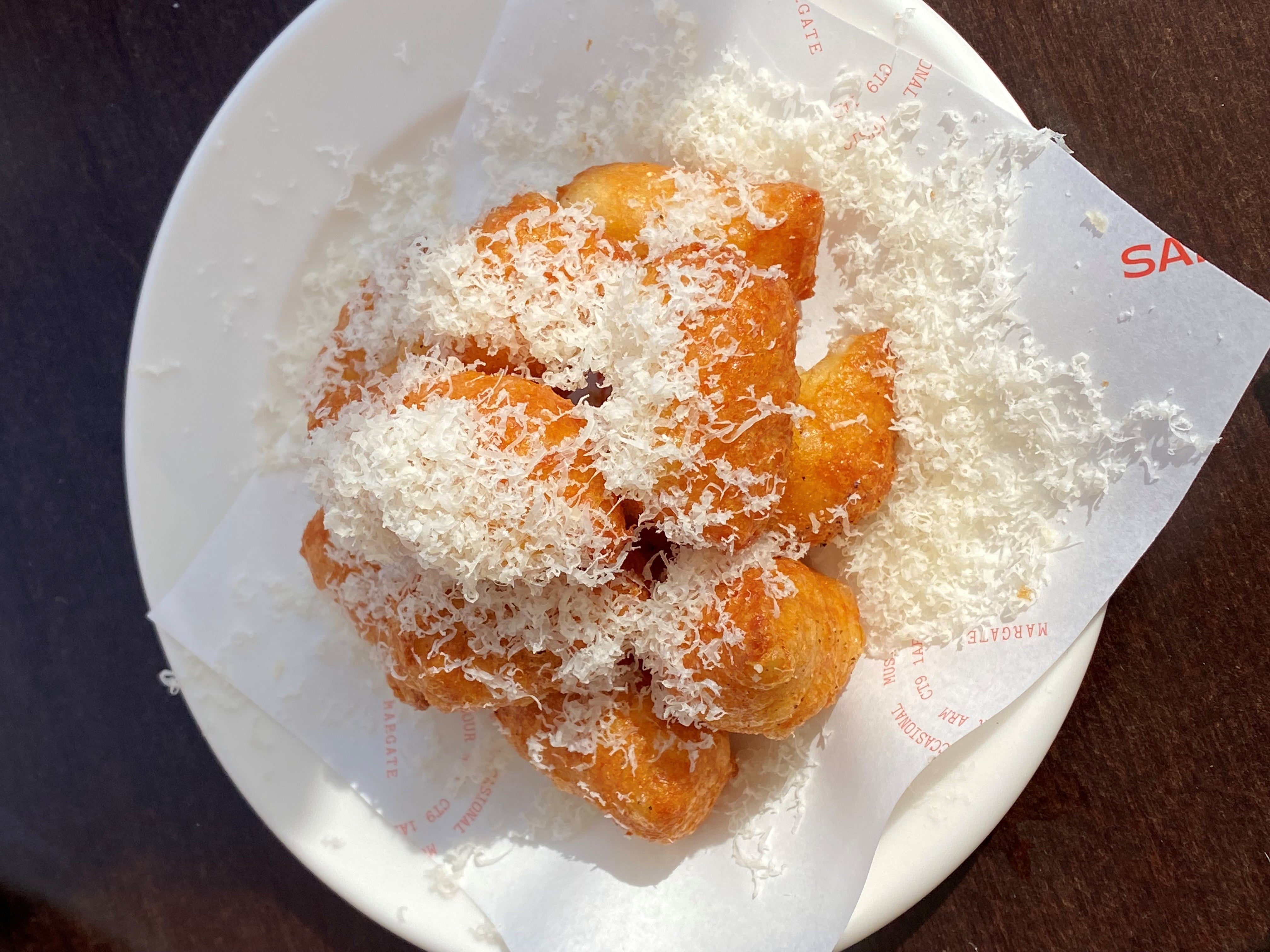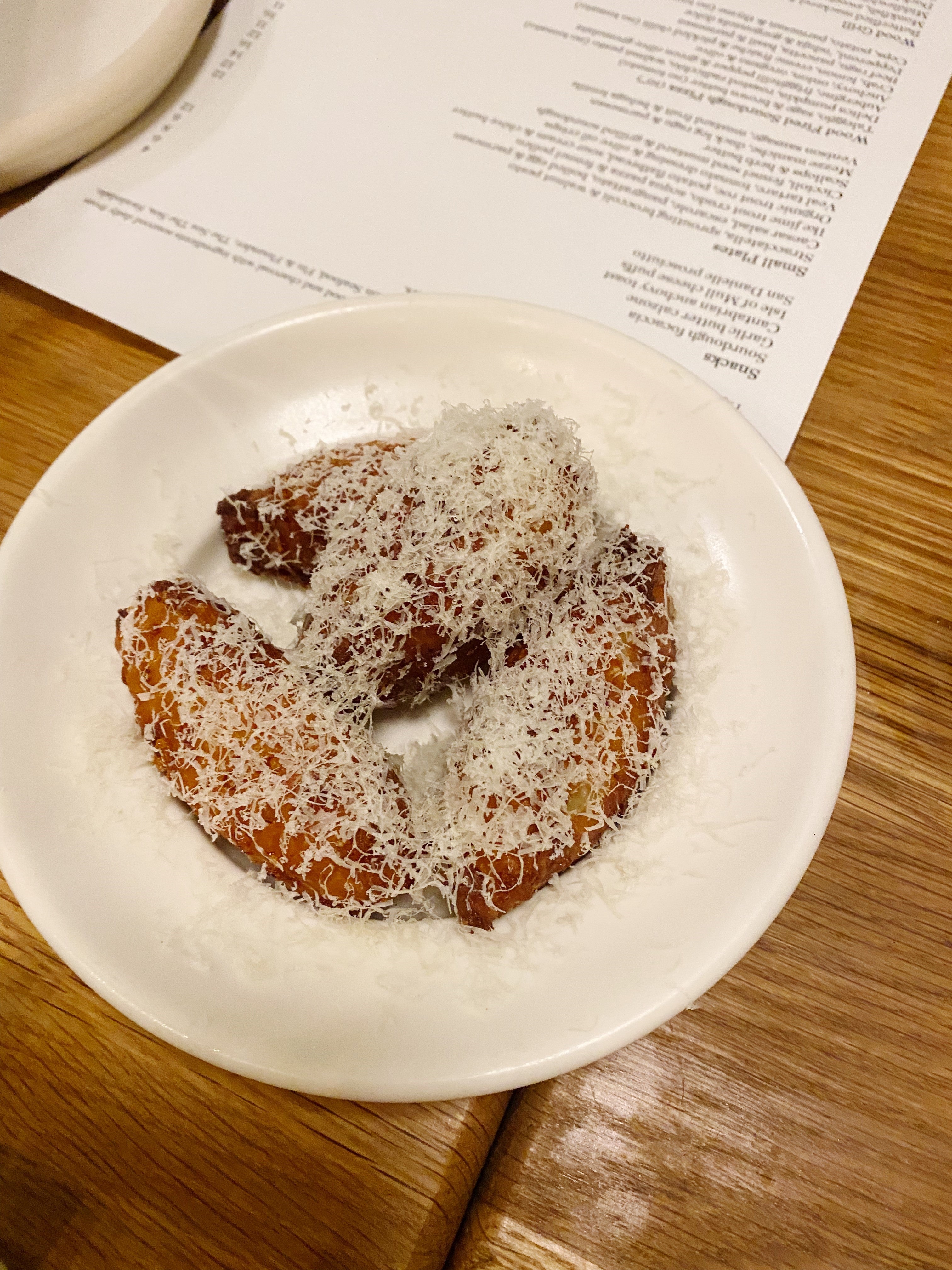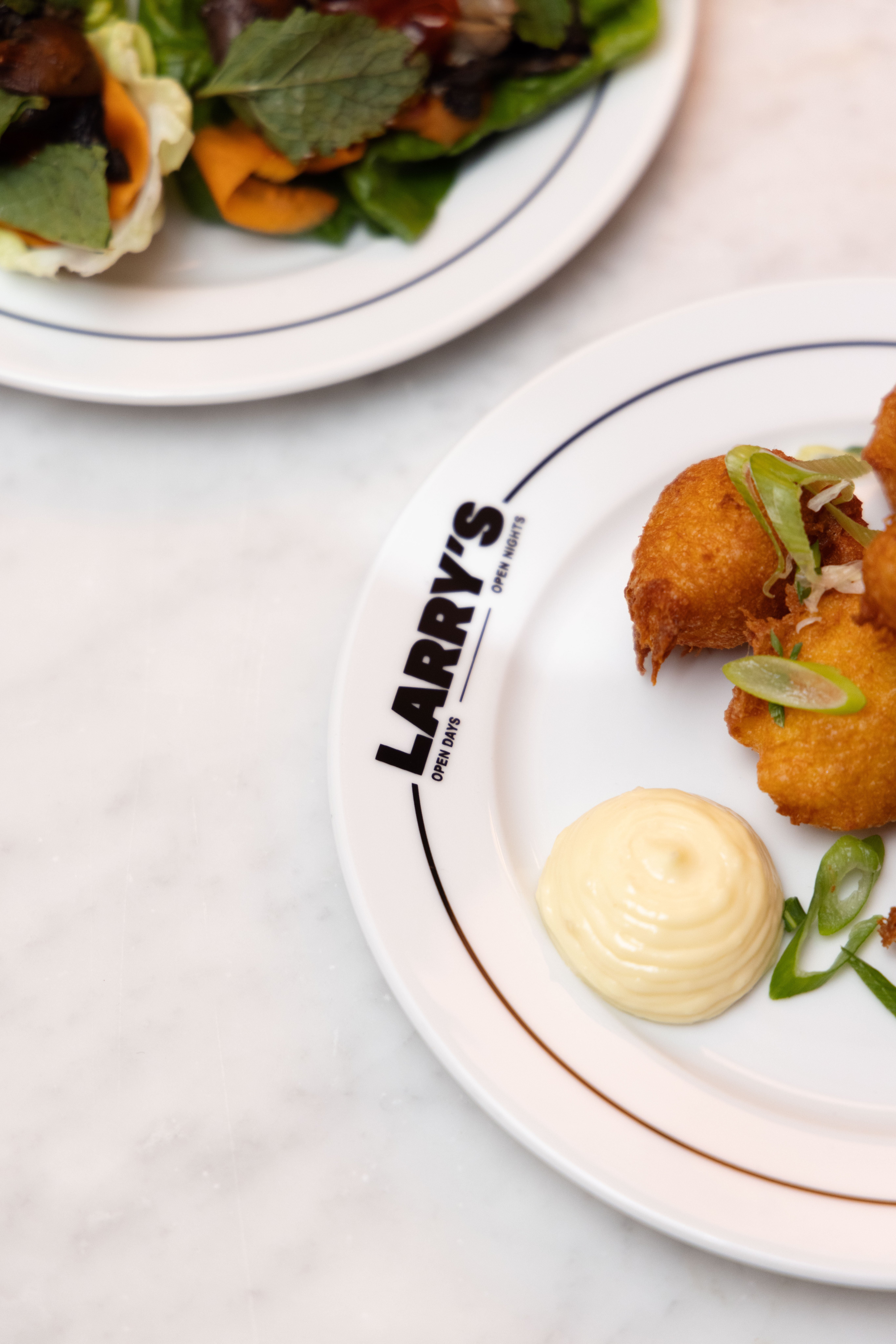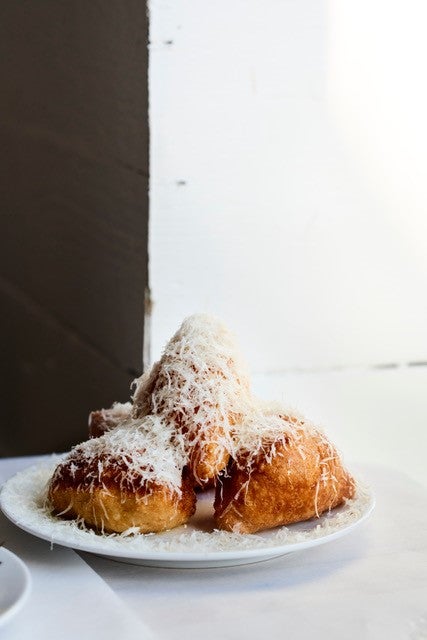Let them eat cheese puffs: The rise of the modern gougere on restaurant menus
Noticing a rise in the humble cheese puff on restaurant menus, Molly Codyre finds out why the snack has seen such a boom in culinary popularity


It started at Elliot’s which, to my memory, was my first jaunt into the great cheese puff wave. Golden exterior, molten interior, covered in a leaning tower of shaved parmesan; it was perfection. I was interviewing someone at the time, and could clearly hear my ecstatic cheese-induced puffs of joy when writing up the recording the following day.
If you’ve eaten out in any semi-trendy, Eurocentric restaurant in London in the last few months you may have noticed a trend brewing. No, it’s not the sparse Scandi-accented dining rooms or the sky rocketing wine list entry point, it’s something a little tastier and a whole lot better; the cheese puff (gougere, if you sympathise with our pals across the channel, or beignet if you’ve recently visited New Orleans). Plates of the golden balls – piled high like some kind of savoury croquembouche and almost always covered in a healthy heap of grated cheese – began to permeate Instagram. It seemed every time I checked a menu online (classic pre-dinner research) or sat down at a table, there they were: like a shining beacon, beckoning me to order.
Whatever name you use, cheese puffs seem to be united in their difference. Textural change is a common factor – at Elliot’s the cheese puffs are almost wet, crunchy on the outside and oozing with molten cheese on the inside. At Sargasso they seem to hold a little more integrity, a little firmer and with a touch of bite. It is thought that the concept of a cheese puff was first born as a gougere in Burgundy. Once referring to a cooking method, the name was a likely reference to a dish that more closely resembled haggis – a stew of herbs, bacon, cheese and meat mixed with blood and offal and cooked in a stomach – usually that of a sheep. Over time the modern creation – consisting of choux pastry mixed with cheese – was popularised and firmly associated with the name.

The origins of the gougere we know today are a little uncertain. Choux pastry itself was introduced to France by Catherine de’ Medici’s chefs in the 1500s, and some claim the first iteration of a gougere was on a menu in Sens in 1571. This is refuted, however, by the residents of Burgundy village Flogny-la-Chapelle, who believe it was invented by a pastry chef residing in the town during the 19th century. It is believed this iteration may have been born from the ramequin pastry, defined by the Oxford English Dictionary (after it’s primary definition as a ceramic dish) as a food consisting of cheese, eggs and butter. According to The Old Foodie, mentions of this dish date back to the mid 1600s.
While they’ve inevitably been adapted and modernised over the years, original gougeres serve as the blueprint for the cheese puffs we see nowadays. Traditionally made with comte or gruyere, these days you’ll see iterations with everything from goat’s cheese to gorgonzola – and labels that range from rudimentary to classic and everything in between.
“Beignets slot right into our menu,” says Nicholas Balfe, head chef and co-founder of Larry’s in Peckham. “Who doesn’t want oozing, melted cheese inside their crispy, fried dough ball?!” Like most places, the cheddar beignets can be found in the snack section of the Larry’s menu, in between the focaccia and the mortadella. It’s a fitting placement – snacks being the dedicated accompaniment to your pre-dinner beverage while you peruse the heartier elements of a menu. “I guess the inspiration behind it was making a tasty bite [or] snack that would remind people of cheese and pickle or a packet of cheese and onion crisps,” says Ollie Templeton, director at London’s Carousel. “I knew that I wanted the vibe of the food to be informal and fun, and also have a nice familiarity to it.”

This is a concept that Balfe also touches on: “I suppose they hold a certain nostalgic feeling,” he tells me. “They reference childhood snacks like Wotsits and cheese toasties. They feel fun, are moreish, but are also a vehicle for artisan cheeses, so I suppose they tick a few boxes for chefs and diners alike.” Artisan cheese is a key element of the cheese puff movement; Balfe uses smoked Lincolnshire Poacher at Larry’s, Carousel opts for Corra Linn from Neal’s Yard Dairy, The Dusty Knuckle fills theirs with Holbrook – goat’s cheese from the Lake District. There’s an element of locality that links all of these together; well-made British cheeses that sit a cut above the rest, giving these snacks an elevated twist.
“If we’re classifying cheese puffs as any form of cheese that’s breaded and fried then, yes: I’ve definitely seen more cheese puffs on menus recently,” says Lucas Oakeley, senior content editor at Mob Kitchen. “It’s honestly difficult to say where a cheese puff starts and where a mozzarella stick ends,” he adds. Oakeley says the first time he remembers seeing a cheese puff on a menu was, like me, at Elliot’s.
Angela Hui, food and drink writer at Time Out, echoes Balfe’s ideas of comfort. “I think in terms of food and why we’re seeing more things like cheese puffs, people are yearning for comfort, solace and nostalgia. It’s cold and we’re still traumatised by the ongoing pandemic and food is a way to bring some joy into our miserable lives,” she says. “Consider the cheese puff, it’s a craggly, airy piece of thing. When done well, it’s warm, rich and covered in a thick layer of salty parmesan.” She adds that while she’s yet to find the perfect cheese puff, the iteration at Mayfair’s BiBi were “very, very good”.

The cheese puffs at Elliot’s came about by accident. “Way back in the beginning, I can’t remember when exactly, our head chef and master baker Adam Sellar, was trying to make gougeres and had some leftovers,” co-owner Brett Redman tells me. “As a little snack he decided to quenelle it and throw it in the deep fryer. The rest, as they say, is history.” So – not quite a gougeres, not quite a cheese puff. The Elliot’s recipe incorporates Isle of Mull cheddar from Neal’s Yard Dairy and comte for a pull-apart texture. Turns out, however, that while the Elliot’s iteration might be responsible for this current explosion on menus throughout London and beyond, Claridge’s was one step ahead of the game. The cheese puffs on the menu at The Painter’s Room are a reinvention of the version that was on the menu at Claridge’s more than three decades ago. “The cheese puffs were actually a regular on the canape menu when I started at Claridge’s in in 1986,” executive chef Martyn Nail tells me.
The concept of familiarity and comfort were brought up regularly throughout conversations on this topic, both with chefs and professional eaters alike. Fatty, salty cheese and warming pastry have been happy friends for centuries – perhaps even since the 1500s – so it seems only fitting that the combination has been tampered with by restaurateurs throughout the country. What drives food trends can always feel intangible – it could be that Hui is right, and the rise of the cheese puff has been spurred on by a collective clasping for comfort, or perhaps it stems from a desire to look local, to celebrate British cheeses in a new and interesting way. Or maybe it’s just the simple pleasure of the innate deliciousness of buttery pastry, and gooey cheese; the sharp tang and the unctuous oiliness. As Hui says: “It’s savoury, salty and a bit funky, opening up the appetite before you dig in.”
Join our commenting forum
Join thought-provoking conversations, follow other Independent readers and see their replies
Comments
Bookmark popover
Removed from bookmarks